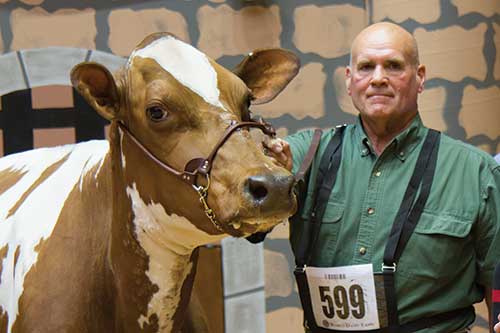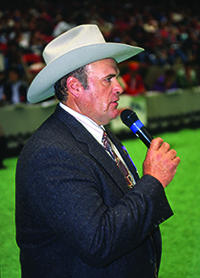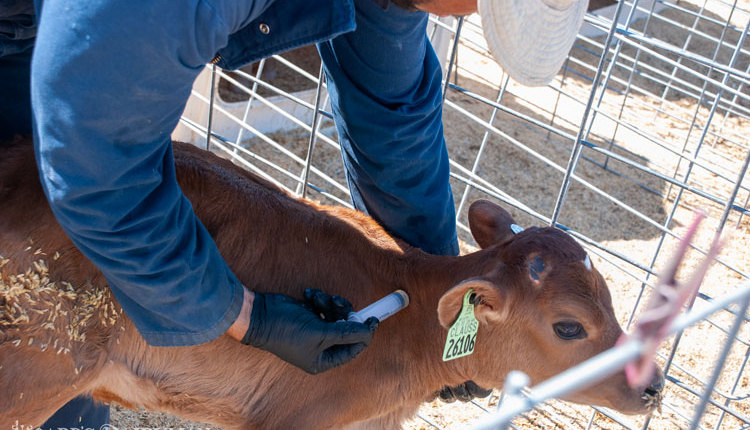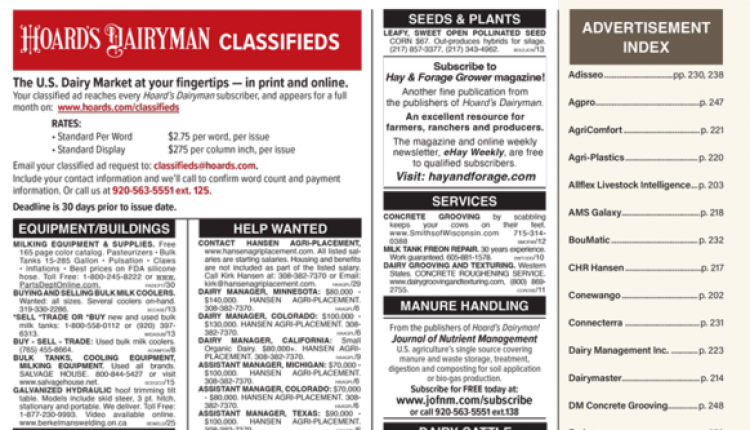We sat down with Steve to reflect on his ability to evaluate cattle, basketball and the game of life.
You judged your first World Dairy Expo in 1979. How has the show ring environment at Expo changed during that time? What does its future look like?
The environment is extremely competitive. They've done a great job decorating the ring and, most importantly, show management brings in the right people to help facilitate it.
Organization is one of the really good things in life and it's one of the really good things in judging. If you can keep the ring and exhibitors organized and your cattle lined up and moved in a timely fashion, I think it makes it a better day for everybody. I've always been blessed when I was there to have great ring personnel. When I started, we had Gene Nelson and Jim Crowley, Sr. Those fellows saw to it that we had good people to help us. In fact, Crowley used to get right down there and work in the ring himself.
You have judged many shows across the country and the world. What makes World Dairy Expo different?
The camaraderie. It's the only time of year that you get to see certain exhibitors and longtime friends. They also have such a great Exhibit Hall. I've told people, you need to see that trade show and you can't see it in one day. In fact, you can walk your legs off for a day and not see all the commercial exhibits. I think the combination of the commercial exhibits and the dairy cattle exhibitors is unique amongst dairy shows in the U.S. and around the world.
How did you get involved in judging and showing dairy cattle? Who were some of your early mentors?
My family has been in the registered Jersey business in Indiana since 1908. My grandfather, father and I have always shown, always had great respect for good cows and good cattle. My dad was friends with Chester Folck and Paul Jackson, and those men always furnished us with good Jersey bulls. And by using bulls from some of their great cows in those early days, we were very competitive at the fairs. I still have some letters that Folck wrote to my dad about the potential of some of those sires. In most cases, they turned out to be exactly what he predicted they would. With a good genetic base, I naturally got hooked on showing.
When I was in high school, I had the opportunity to work with Heaven Hill Jerseys. The renowned herd was managed by Max Gordon and owned by Mr. Uihlein, who had controlling interest in Schlitz Brewing. I helped them at the All-American when it was in Columbus. So, over the years, I have been befriended by a lot of good people who had a lot of cow sense. Those experiences have been a great help to me.

You have shown Jerseys for many years. How is it different placing cows than leading them in the ring?
I think if you know how to evaluate cows - whether you're judging or you're leading a good cow - you've got a pretty good idea of where she needs to be placed in the ring.
I've been blessed to have an eye for a good cow . . . there are some people who don't have that blessing. They just cannot find or search out the better ones. They have an idea of what a good cow is but they don't have an idea about a great cow.
Today, we have so many great cows. I'm just overwhelmed now when I sit and watch cows that are champions today.
I had the honor of leading Veronica to her championship. There's just a number of great cows in all breeds, especially the breeds that we consider to be the minor breeds. In particular, the Milking Shorthorn and Brown Swiss breeds have both bred in more milk. They've got great type, and they've got great udders.
White Jersey Farms has exhibited many class winners as well as Champions. What has been the key to your long-standing success in the show ring?
Care. We do the little things. On hot days, the cows are cared for inside rather than just running out in the pasture. We have boxed stalls available and we have another barn available that can house a few head. When the weather is really bad in the winter time, those cows get out for daily exercise but yet they also are in where they don't have to face all the elements either.
This past January, we had a couple of days where it was 40 below with the windchill and 50-mile-per-hour winds. Those show cows weren't out with the dry cows or with the heifers and taking a chance on getting frost bit teats, pneumonia or slipping on the ice and snow.
That goes back to my original statement of care. I think that is the biggest thing that you can do to help keep your cows in top shape. Of course, if you know you have a good cow and she keeps having heifer calves, you've always got a few heifers around to participate in breed sales and create extra income. Now, you have to do that just to meet your feed costs. Feed costs to raise heifers today are astronomical, and you have to have a few good ones to pass on to meet your obligations financially.
What characteristics do you appreciate about the Jersey breed, and why have you continued to make them a part of your dairy operation?
The first thing is, they have a great personality. The second thing is, they give a good volume of high-quality milk. Our butterfat runs between 5 and 5.2 percent, protein between 3.5 and 3.9 percent, and I can get 75 pounds of milk out of a Jersey cow with a minimal amount of feed. We make good corn silage and we have good hay. They eat less and they return a profit, even in bad times. And Jerseys will work with you.
You get into years like 2012 when we had the drought and there wasn't much good hay made in our area. We could feed a lot of corn silage rather than the 30 to 35 pounds we normally feed, we could get up to 50 to 55 pounds of corn silage. A minimal amount of hay, minimal amount of the high-priced $7 corn and the cows still returned a profit over their feed costs.
Plus, there's the fertility factor. You can freshen Jersey heifers at 1 year 10 months and they breed back. In fact, I have a cow that's 17 years old that's going to have her 15th calf. That's kind of unheard of, but there again, she's always been well-cared for.

Of the many awards you have received, which meant the most to you?
Definitely the Klussendorf Award. There's so many great people over the years who were considered top cowmen who have won that award since 1937. Also, it's a great organization. I've enjoyed it thoroughly. When I was president for two years, I diligently worked to try to create the Klussendorf scholarships.
When I look back on receiving the Klussendorf Award, I was overwhelmed that day because its ideals have been the standard that I have tried to live by in my lifetime. "The showman who most nearly exemplifies the ability, character, friendliness, and sportsmanship practiced by Arthur Klussendorf."
Let's bring this back to integrity. Right now, I think our farm's best heifer is three weeks out of being in the next class. I know a lot people say I'm stupid for doing that. Well, that's fine. But I go to bed at night and that heifer was born on the 10th day of February, and that's when she was born. So, I've tried to stick by all the credentials that the Klussendorf Award has represented.
You spent over two decades as an Indiana high school basketball referee. What similarities do judging shows and officiating basketball games have in common? How are they different?
They are different because you are dealing with a rowdy crowd at the basketball games.
The one way that I have always felt like they were similar was the fact that you have to concentrate strictly on what's going on in front of you. In judging, I've been able to lockout the ringside and lockout the crowd and lock myself into what's in the ring. And it was the same way with refereeing basketball.
Take for example, refereeing basketball games. I was fortunate to work many of the biggest games in the state of Indiana over the years. There is that thrill of victory and the agony of defeat. In that atmosphere, there were always hostile people who had to be dealt with.
I think probably the most hostile environment I ever was in was at a city championship game in Michigan City, Ind. It was Michigan City Rogers versus Michigan City Elston. Five years before that, they played in the championship game and had never finished. The crowd had got so out of hand that the referees had to have escorts to get out of the building and they shut the game down.
I always felt happy and proud of the fact that the one year that I refereed that intercity rivalry (I had a good man with me on the other end of the floor) we did finish the game, we got a winner and we didn't have the hostile environment. That was always one of the proud moments, in that respect.
When you name that champion cow in any breed at Madison, you don't have the hostility but you see the thrill that it gives people and the crowd, that's the similarity between the two.
You are well-known for wearing a cowboy hat while you judge. Is there a special reason for it?
No, not really. I have a half dozen hats around, and on hot days here at home when I'm out in the field working, I wear a straw cowboy hat and it keeps my bald head from burning. I don't think there is any special reason for it. It's been part of my attire, I guess, for years and years and years. There's nothing special about it. It's one of the things that I started when I judged my first shows and continued until Expo (they don't allow you to wear a hat anymore). That's just been a part of me.











